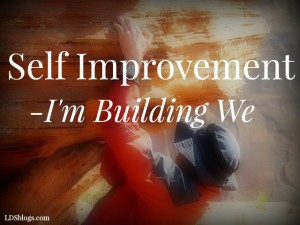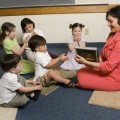“Your child is lacking organizational skills,” the professional observer announced after describing the mess my child wallowed in at school, not unlike at home. I regularly discover a pile in front of the dryer where someone was looking for something and unloaded the whole load onto the floor. Empty drawers around the house, the empty “lost soles” sock bag, and the dirty clothes hampers all with their vomited, scattered piles near by. The professional diagnosis was surely not far from wrong. We needed some organization skills. I couldn’t possibly blame my husband for this one. I’ve been fighting a battle against the piles for years. I knew of no cure. I wondered, what is organization?
In order to help my children succeed, I had to figure out what organization even is.
What is Organization?
It is not the ability to clean or make order. My children and I could all clean. In fact, we could clean very well. Problem was, when we weren’t fully focused on cleaning, it was the farthest thing from our mind. We could have a very clean house and two hours later you couldn’t tell. The piles were everywhere. Everything anyone had used in the last two hours was scattered exactly where it was like a crime scene. It certainly was not missing a scrap of evidence.
 I was so tired of our repeated, huge efforts to clean getting shot to pieces in such a short time. What could I do? It became clear to me that the problem was not that we didn’t clean. We all knew how to clean and could even do it well. What, then, was I missing?
I was so tired of our repeated, huge efforts to clean getting shot to pieces in such a short time. What could I do? It became clear to me that the problem was not that we didn’t clean. We all knew how to clean and could even do it well. What, then, was I missing?
I called my grandmother and explained this amazing phenomena I just could not understand. How could it all get undone so quickly? She said, “DarEll, you have to watch your hands. Look where you set things down. Make sure you don’t put it down until you are putting it where it goes.” Ah! The lightbulb went on in my head. I was aiming wrong all along. I had been trying to clean it up. But my real goal was to keep it clean.
I went back to the “crime scene” and sure enough. My own distractions and interruptions were all physically evident. Almost nothing I touched made it all the way to where it belonged before I set it down without thinking. So, my first step was obvious. I had to follow Gandhi’s example and get myself in order so I could then train my kids. Just by my being aware, literally watching my hands, and keeping my things picked up, the whole house improved. Now I also practice looking back before leaving a room to make sure I’m taking my mess with me. (This has prevented so many incidents of lost purse, keys, phone, etc.)
With a clear counter, no one can get away with leaving something there for long. It stands out like a neon sign. Truly order enables order as much as disorder seems to encourage itself.
So if organization is not being able to clean, what is it? This is my definition:
Organization is the result of recognizing where something belongs and getting it there consistently, the first time.
Could that be all it is? Could it really be as simple as putting things where they go every time? It is both easier and harder than it looks. It requires knowledge, quick decision making, follow through, group agreement, and consistent upkeep. But, once it becomes a normal system, it can become, at least to some extent, easier and more automatic which is incredibly helpful in shared spaces.
It just isn’t always easy to know where things go, at least for me. In order to recognize where something belongs, you have to know if you need it at all. It might belong in the give away box or the trash can. Just because it is here now does not give it eternal property rights.
Sorting is not just for toddlers.
 We have to sort through the papers and the miscellaneous messes and decide well if it is worth touching again, ever. We have to separate the wheat from the chaff and unlike wheat, what is golden is always changing. A new season makes my youngest son’s winter clothes that still fit, but just barely, not worth keeping for next year. My youngest is 9, but the toddler car seat is worth it’s weight for family that fly in and not being trapped when I’m babysitting. So the first, and possibly hardest cut is, does it belong here at all?
We have to sort through the papers and the miscellaneous messes and decide well if it is worth touching again, ever. We have to separate the wheat from the chaff and unlike wheat, what is golden is always changing. A new season makes my youngest son’s winter clothes that still fit, but just barely, not worth keeping for next year. My youngest is 9, but the toddler car seat is worth it’s weight for family that fly in and not being trapped when I’m babysitting. So the first, and possibly hardest cut is, does it belong here at all?
Dividing is Creating
I was working on an art project when I happened to read Genesis chapter 1. “God created the heaven and earth,” and He did it by dividing. This was such an exciting and surprising discovery for me. I’d never thought of it before. He divided, separated unlike things and named them. He also gathered the water “unto one place, and let the dry land appear.” Bringing together same things and making space for other things was also creating.
I felt a blessed affinity with God, a new understanding of creation. It applied to my time as well as my physical surroundings. In so many ways I had never thought of, organization is creation and it is art.
“Music is not only made up of sounds, but also the silence between sounds.”
–from Alfred’s Essentials of Complete Music Theory.
 Like music, the art of organization is not just what is, but also what it isn’t. It is made up of space, separation, gathering, and labeling. Labeling a tabbed divider, a drawer, or a space is naming, and naming is part of creating, too. Leaving an empty space in music is called a rest. An empty space in our schedule may literally be a rest. However, in our physical home or surroundings, a rest in space, an empty or void place could be a rest to the eyes or to the soul.
Like music, the art of organization is not just what is, but also what it isn’t. It is made up of space, separation, gathering, and labeling. Labeling a tabbed divider, a drawer, or a space is naming, and naming is part of creating, too. Leaving an empty space in music is called a rest. An empty space in our schedule may literally be a rest. However, in our physical home or surroundings, a rest in space, an empty or void place could be a rest to the eyes or to the soul.
My dad liked to stare at a blank wall. He felt it encouraged his imagination and thinking. I also like to have moments of visual rest so that my mind can run wild with possibilities and is not visually disturbed. I have been to homes where every wall is covered in creative, homey crafts. I enjoy visiting, but I am so glad that is not my home. It would be far too stimulating for me, and I can’t imagine all the dusting.
We each have to experiment and discover how much physically empty space we need for our own internal peace. What makes one person feel cozy and comfy could make another feel stressed or crowded out.
An open space leaves room for the new, for the future, and that, in itself is exciting to me. My favorite place to work is on a big, empty table with a light smack overhead. It is like it is calling me to come make a mess and create something wonderful on it. If I want to feel inspired to create something new, a physically open space is a prerequisite.
For example, who wants to wear themselves out cleaning just so you can cook and then clean again? Starting out with a blank counter canvas and your tools and supplies handy makes it so much more inviting. What will those left overs and that over ripe fruit become today? If I’m lucky, no one will recognize it the second time.
Cacaphony
Cacaphony in music is a “frequent use of discords of a harshness and relationship difficult to understand.” –Dictionary.com
In our home, what is too neat, matching and organized may feel very discordant to those that love variety, activity, uniqueness and soft boundaries. On the other hand, a mess that doesn’t belong to you nearly always feels harsh to everyone else because they don’t understand it. In our mess, we know (or often think we know) right where we left it. If someone else moves something or worse, puts it away, we might think it is lost.
We don’t have to all march to the same beat to have organization. But we do have to live together, and too many systems in shared areas destroys harmony.
What works wins
 So how do we agree on where things go so we can get them there most of the time, if not every time?
So how do we agree on where things go so we can get them there most of the time, if not every time?
Big picture thinkers like myself are not very helpful when it comes to keeping things in very specific (nit picky) subclassifications. If you love very detailed, alphabetized order, I suggest you maintain it yourself because, most likely, you will do it best and it will be worth it to you. Like a library, you could request that family members return things to a sort shelf and not put it away themselves. Similarly, a lost and found space that is out of sight is so helpful for personal items left out. The finder does not need to know where it goes, just where to put it.
Decide the criteria or category for sorting:
Will you be sorting it by use and location such as all the baking items near the oven, all the writing supplies by the desk? In this case, you may have duplicate scissors or other key items scattered around the house in every area you are likely to use them and return them correctly (the first time).
Will your books be by subject, size, color, or author? We keep our family books by subject groupings and our videos by color since all the children can sort by color.
If sorting by type, then all the scissors, for example, would be in one known location.
We all sort by type to some extent. For instance, most clothing hangs in the closet. But, when you subdivide it, how will you do that? You could do it by outfit, by color, by activity–work, play, sleep, etc. I have tried all these ways to keep my closet organized. For me, color is the most sustainable.
Which way of organizing, sorting and putting away correctly and consistently, is best for you?
The one you can maintain. If it is too complicated, is not easy to remember, or annoys you you will not keep it up (and keeping it up is being organized).
Children may need pictures, labels, or practice. In fact, we may all need those very same things.
Keep it simple, stupid
If you are greatly offended by the word “stupid” I apologize. In my family growing up it was a word we would never use in reference to a person. We might call a non-functioning thing, “stupid,” but certainly not a person. And, to be clear, I am not calling anyone stupid.
 I like this phrase, though, because it is memorable and tells it like it is. When we are busy, distracted, or in a hurry, we want to be able to be stupid. We want to make the right choices easy, simple, and almost thought free. We want to be able to have a system so simple that what we accidentally do will be just the right thing. We want our organization to become a default, the thing most likely to happen if we don’t change anything.
I like this phrase, though, because it is memorable and tells it like it is. When we are busy, distracted, or in a hurry, we want to be able to be stupid. We want to make the right choices easy, simple, and almost thought free. We want to be able to have a system so simple that what we accidentally do will be just the right thing. We want our organization to become a default, the thing most likely to happen if we don’t change anything.
So, where we drop the clothes at night is a great place to put the hamper. Where we shuck shoes is a good place for the shoe bin or cedar chest or toy box (so they don’t show). Trash cans belong where you open the mail and keys belong in a bowl or on a hook where you want to drop them anyway. Let your home serve you by organizing it so that it does.
Summary:
If creating organization equals dividing, gathering, and labeling then I think I’ll start with myself. I am no longer going to cower in shame when someone points a finger, labeling me or my family “disorganized.” I know, for me at least, it is untrue. That label no longer applies. I am organized. Most of the piles are gone. I have created. I have divided. And in many ways, I have conquered! (Quick note to tired, new or young moms: it also helps that half of my children are now adults. Don’t kill yourselves off striving for perfection. Obviously, tiny tots are not that organized, and they are great disorder makers, lol.)
My level of organization may never be library worthy. I think in categories and like to have things handy. But, my organization only has to work for me and be maintainable by me. So, I don’t ever have to impress anyone. It isn’t a comparison. If I am my own organization creator, then, I’m the label-maker, too.
My Two Rules to Organization:
-
Recognize and get rid of trash immediately.
(Try to ignore the creative, possible future uses for everything.)
Having trouble deciding? Here are two tests:
Have you used it in the past year or know you will use it soon?
If you don’t use it, lose it.
(If it makes you feel better, give it to a friend or family member who will use it more and you could borrow it from–if that chance need should come along.)
“Have nothing in your home that you do not know to be useful or believe to be beautiful” –William Morris
-
When you are finished, put things away where they go the first time.
I have a niece that loves to clean and organize her room. She has such an amazing attitude I asked my sister-in-law how this happened. She said, she just likes it. And, her mother loves it, too. She has, simply, learned to love keeping it clean, and she does it by sorting.
So, it seems, that organization is child’s play.
Make time to become aware of the physical music surrounding you as you create a pattern of things being where they belong in an easy, natural way for you.
May you feel the rest of empty space.
Namaste,
DarEll S. Hoskisson
About DarEll Hoskisson
DarEll S. Hoskisson loves to do hard things, but not too hard. She shares her own challenges, goals and experiences as she guides you into a realistic path of self-reflection and self-improvement. She shares tips on how to find, know and trust yourself so you can decide if other’s suggestions are right for you.
DarEll has the world a little upside down—where work is play and play is work. She actually thinks other people’s problems are fun to try to solve and lights up with a personal challenge. She loves people, harmony, and excellence. She also loves useful things like tools and ideas that make work faster, easier and more fun.
DarEll married in 1993 and graduated from BYU (1995) with a bachelor’s degree in English and Secondary Education. Since then she was adopted by 5 children and has worked with many non-profits. She is currently a certified personal trainer and group fitness instructor—leading pilates and yoga at her local YMCA.
DarEll lives in Florida where she enjoys her family, nature, her work, and encouraging people to live well.
She periodically posts her poems, what she is learning, and service opportunities on her personal blogs:
https://personalabridgements.wordpress.com and https://darellhoskisson.wordpress.com
Twitter •








So much good stuff here!
I struggle with keeping to much stuff and deciding where to keep things and putting them right back. I am however, determined and will reread this often for help!
This is so good!!!! Thank you for writing and giving us all the information to be better! You are awesome!